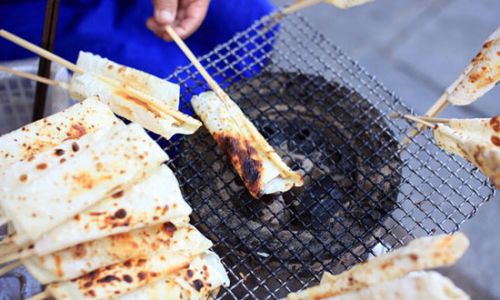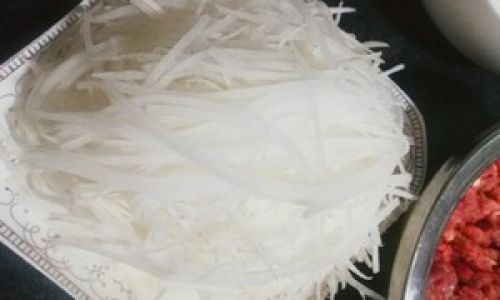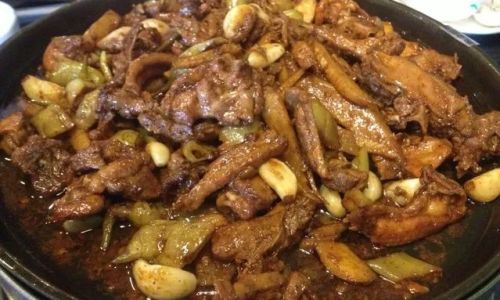Table of content
Nestled in the breathtaking landscapes of Yunnan Province, China, lies Dali—a city renowned for its ancient architecture, serene lakes, and vibrant cultural heritage. Among its many culinary treasures, Dali Rushan (大理乳扇) stands out as a beloved dairy product that has captivated locals and visitors alike for centuries. This unique cheese-like delicacy, crafted from goat or cow’s milk, boasts a delicate balance of creaminess, tanginess, and versatility. For those unfamiliar with Rushan, its appearance—resembling translucent, golden fans or sheets—may seem unusual, but its culinary potential is boundless. This article delves into the history, preparation methods, and creative ways to savor Dali Rushan, ensuring both culinary novices and seasoned food enthusiasts can appreciate this Yunnanese gem.
A Brief History of Dali Rushan
The origins of Rushan trace back to the Bai ethnic minority, who have inhabited the Dali region for millennia. The Bai people, known for their mastery of dairy farming in mountainous terrains, developed Rushan as a means of preserving milk in a region where refrigeration was scarce. The name Rushan itself translates to “milk fan,” a nod to its distinctive shape, which resembles a folded paper fan.
Traditionally, Rushan was a symbol of hospitality, offered to guests during festivals, weddings, and family gatherings. Its production involved meticulous craftsmanship, passed down through generations. Today, while modern techniques have streamlined the process, many artisans still adhere to time-honored methods, ensuring Rushan retains its authentic flavor and cultural significance.
The Making of Dali Rushan
To fully appreciate Rushan, one must understand its creation. The process begins with fresh milk, often from indigenous goat breeds known for their rich, creamy milk. The milk is heated and combined with nigari (a natural coagulant derived from saltwater), which curdles the liquid. The curds are then stretched and kneaded into thin sheets, which are draped over bamboo poles to dry. The result is a semi-solid, pliable dairy product with a subtle fermented aroma and a texture that ranges from chewy to crisp, depending on preparation.

How to Eat Dali Rushan: A Culinary Adventure
Dali Rushan’s versatility makes it a star ingredient in both sweet and savory dishes. Below are some of the most beloved ways to enjoy this delicacy:
Fried Rushan (炸乳扇)
Fried Rushan is perhaps the most popular preparation method, offering a crispy, golden-brown treat with a melt-in-your-mouth interior.
-
Method:
- Slice Rushan into bite-sized strips or leave whole.
- Heat vegetable oil in a pan over medium heat.
- Fry the Rushan for 1–2 minutes per side until puffed and lightly browned.
- Drain on paper towels and serve immediately.
-
Serving Suggestions:
- Sprinkle with powdered sugar or honey for a sweet snack.
- Pair with chili flakes or a dipping sauce made from soy sauce, vinegar, and minced garlic for a savory twist.
Grilled Rushan (烤乳扇)
Grilling Rushan enhances its natural smokiness and imparts a delightful charred flavor.
-
Method:
- Preheat a grill or skillet.
- Brush Rushan sheets lightly with butter or oil.
- Grill for 1–2 minutes per side until grill marks appear.
-
Serving Suggestions:
- Sandwich grilled Rushan between slices of fresh bread with avocado and tomato.
- Wrap around grilled meats or vegetables for a hearty kebab.
Rushan in Sweet Desserts
Rushan’s mild tanginess complements sweet flavors beautifully, making it a star in Yunnanese desserts.
-
Rose Petal Rushan Rolls:

- Soften Rushan sheets by steaming or microwaving briefly.
- Spread a thin layer of rose petal jam or sweet bean paste over each sheet.
- Roll tightly and slice into bite-sized pieces.
- Dust with powdered sugar before serving.
-
Rushan Milk Pudding:
- Simmer Rushan in milk until melted.
- Stir in sugar, agar-agar, and vanilla extract.
- Pour into molds and chill until set.
- Serve with fresh fruit or a drizzle of honey.
Savory Rushan Dishes
Rushan’s umami depth shines in savory preparations, adding richness to stir-fries, soups, and more.
-
Stir-Fried Rushan with Mushrooms:
- Slice Rushan into strips.
- Sauté mushrooms, garlic, and ginger in oil until fragrant.
- Add Rushan and toss with soy sauce, oyster sauce, and a splash of rice wine.
- Garnish with chopped scallions.
-
Rushan and Tomato Soup:
- Simmer diced tomatoes with onion and garlic until softened.
- Add vegetable broth and Rushan strips.
- Blend until smooth and season with salt and pepper.
- Serve with crusty bread.
Raw Rushan with Accompaniments
For the adventurous, raw Rushan offers a pure taste of Yunnan’s terroir.
- Method:
- Serve thinly sliced Rushan with:
- Fresh berries and a drizzle of honey.
- Toasted nuts and a sprinkle of cinnamon.
- A side of black tea or Pu-erh to balance its richness.
- Serve thinly sliced Rushan with:
Rushan in Beverages
Rushan’s creaminess makes it a luxurious addition to drinks.
-
Rushan Latte:
- Steam milk with crushed Rushan until frothy.
- Pour over espresso and top with a pinch of cardamom.
-
Iced Rushan Lemonade:
- Blend Rushan with lemon juice, sugar, and ice.
- Strain and serve over crushed ice.
Pairing Suggestions
To elevate your Rushan experience, consider these pairings:

-
Beverages:
- Pu-erh Tea: Earthy and robust, it cuts through Rushan’s richness.
- Yunnan Coffee: A bold brew complements grilled or fried Rushan.
- Rose Milk Tea: Sweet and floral, it harmonizes with dessert preparations.
-
Accompaniments:
- Fresh Fruit: Berries, mango, or lychee add a refreshing contrast.
- Nuts: Toasted almonds or pine nuts provide crunch.
- Herbs: Mint or basil leaves lend a fragrant finish.
Where to Find Dali Rushan
While traveling to Dali offers the freshest Rushan, this delicacy is increasingly available globally:
- Local Markets: Visit Dali’s morning markets, such as the March Street Market, where vendors sell freshly made Rushan.
- Specialty Stores: Look for Yunnanese or Chinese grocery stores in major cities.
- Online Retailers: Platforms like Alibaba or Taobao (for international shipping) often stock authentic Rushan.
Cultural Etiquette and Tips
- Respect Tradition: When offered Rushan in a Bai household, accept it with both hands as a sign of gratitude.
- Storage: Keep Rushan refrigerated in an airtight container for up to two weeks.
- Sustainability: Support artisans who use ethical dairy practices and avoid mass-produced varieties.
The Health Benefits of Dali Rushan
Beyond its culinary appeal, Rushan offers nutritional perks:
- Rich in Protein: A 100g serving provides ~28g of protein.
- Calcium Boost: Essential for bone health.
- Probiotics: Fermentation introduces beneficial gut bacteria.
However, moderation is key due to its high fat content.
Conclusion: Embracing Dali’s Culinary Heritage
Dali Rushan is more than a dairy product—it’s a testament to Yunnan’s cultural resilience and culinary ingenuity. Whether fried, grilled, or folded into desserts, it invites diners to explore the intersection of tradition and creativity. As global interest in regional cuisines grows, Rushan serves as a delicious ambassador for China’s diverse food landscape. So, the next time you encounter this golden fan-shaped treasure, embrace the adventure—and savor every bite.
Word Count: 1,646+
This article aims to celebrate Dali Rushan’s culinary versatility while honoring its cultural roots. By blending history, preparation techniques, and creative recipes, it offers a comprehensive guide for anyone eager to explore Yunnan’s dairy legacy.




0 comments